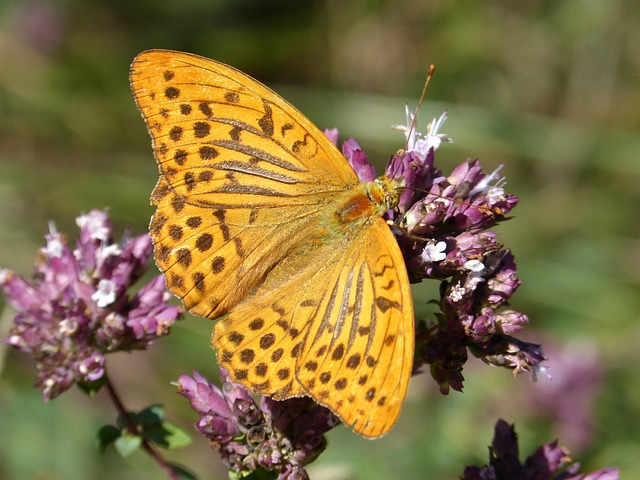The Enchanting World of Butterfly Gardening
Imagine stepping into your backyard, surrounded by a fluttering rainbow of delicate wings. The air is filled with the gentle hum of butterflies dancing from flower to flower, their vibrant colors bringing life and movement to your garden. This isn't just a fantasy – it's the captivating reality of butterfly gardening, a growing trend that's transforming outdoor spaces into magical havens for both humans and these beautiful insects.

The concept is simple yet profound: by carefully selecting plants that serve as food sources and breeding grounds for butterflies, gardeners can attract a diverse array of species to their yards. This not only adds beauty and wonder to outdoor spaces but also plays a crucial role in conservation efforts for these important pollinators.
Designing Your Winged Wonderland
Creating a successful butterfly garden requires thoughtful planning and design. The key is to provide a variety of nectar-rich flowers that bloom throughout the season, ensuring a constant food source for adult butterflies. Popular choices include butterfly bush, coneflowers, zinnias, and lantana. But it’s not just about the flowers – incorporating host plants like milkweed, fennel, and parsley is essential for supporting butterfly larvae.
Layout is equally important. Butterflies prefer open, sunny areas with some shelter from wind. Grouping plants in clusters creates visual impact and makes it easier for butterflies to find their favorite blooms. Adding shallow water sources, such as puddling areas or birdbaths with pebbles, provides necessary hydration and minerals.
Beyond Beauty: The Ecological Impact
While the aesthetic appeal of butterfly gardens is undeniable, their significance extends far beyond visual charm. These gardens serve as vital refuges for butterfly populations facing habitat loss due to urbanization and agricultural practices. By creating these microhabitats, home gardeners become active participants in butterfly conservation efforts.
Moreover, butterfly gardens support entire ecosystems. They attract other beneficial insects, birds, and small animals, contributing to overall biodiversity. This interconnected web of life helps maintain a healthy balance in your garden, reducing the need for chemical pesticides and promoting natural pest control.
The Therapeutic Power of Butterfly Watching
In recent years, the mental health benefits of butterfly gardening have gained recognition. The act of observing these graceful creatures has been shown to reduce stress and promote mindfulness. It’s a form of nature therapy that’s accessible right in your backyard.
Many gardeners report a sense of peace and connection to nature while tending to their butterfly gardens. The slow, deliberate movements required for gardening, combined with the joy of witnessing butterflies in various stages of their life cycle, create a meditative experience that can be profoundly restorative.
Innovative Trends in Butterfly Gardening
As the popularity of butterfly gardening grows, so do the innovative approaches to creating these spaces. One emerging trend is the integration of technology to enhance the butterfly gardening experience. Apps that help identify butterfly species and track migration patterns are becoming popular tools for enthusiasts.
Another exciting development is the concept of community butterfly corridors. Neighborhoods are coming together to create connected patches of butterfly-friendly habitats, effectively expanding the range and resources available to local butterfly populations.
Adapting Butterfly Gardens for Urban Spaces
The allure of butterfly gardening isn’t limited to those with sprawling yards. Urban dwellers are finding creative ways to attract butterflies to balconies, rooftops, and small patios. Container gardens filled with nectar-rich plants and vertical gardening techniques are making it possible to create butterfly havens in the heart of the city.
These urban oases not only provide much-needed green spaces in concrete jungles but also serve as important stepping stones for migrating butterflies, offering food and rest during long journeys.
The Future of Butterfly Gardening
As awareness of environmental issues continues to grow, butterfly gardening is poised to play an increasingly important role in conservation efforts. Education programs in schools are introducing children to the wonders of butterfly gardening, fostering a new generation of environmental stewards.
Research into butterfly behavior and preferences is ongoing, continually refining best practices for garden design. This evolving knowledge is helping gardeners create more effective and sustainable butterfly habitats.
Embracing the Butterfly Effect
Butterfly gardening represents a beautiful synergy between human creativity and natural wonder. It’s a testament to how small actions in our own backyards can have far-reaching effects on the environment. As more people embrace this enchanting hobby, we’re not just transforming our gardens – we’re creating a network of havens that support and celebrate one of nature’s most beloved creatures.
Whether you’re a seasoned gardener or a novice with a small balcony, the world of butterfly gardening offers endless possibilities for beauty, learning, and connection with nature. So why not spread your wings and dive into this magical realm? Your garden – and the butterflies – will thank you.





